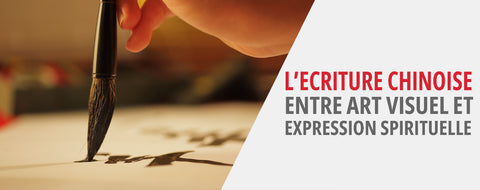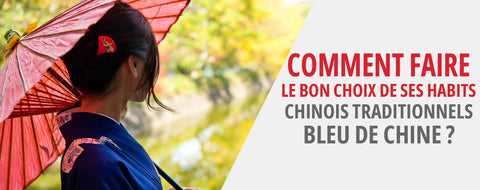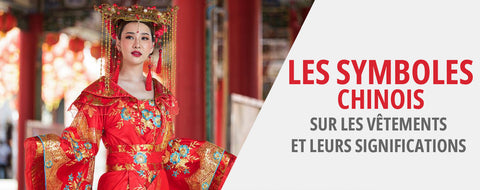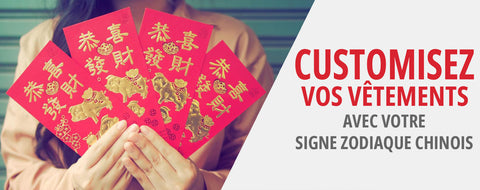
The History of the Chinese Umbrella
reading - words
The traditional paper umbrella is a Chinese invention, believed to have existed since the early 1st century AD. The Chinese paper umbrella has since spread to several Asian countries, including Japan, but also to other South and Southeast Asian countries such as Korea, Malaysia, and even India.
History of the Chinese Umbrella
China is not the country that invented the umbrella, since that honor goes to ancient Egypt, which is said to have created it more than 3,500 years ago. However, China remains one of the countries that has the most ancient tradition of umbrellas and it was she who invented silk umbrellas and especially oiled paper umbrellas, ancestors of umbrellas, and this about 2,000 years ago. Indeed, initially, umbrellas were made from leaves, such as those of eucalyptus or palm trees.
According to historians, umbrellas have evolved a lot throughout their history. In fact, they once resembled small parasols and were used not only as a measure of protection against the rain and the heat of the sun, but also as a symbol of prestige and of power. In other words, the bigger the umbrella, and the more people are needed to carry it, the more powerful the person under the umbrella is. For example, legend has it that 24 people had to hold the umbrella of the Emperor of China!

The first umbrellas made of paper and silk were already made with lightweight bamboo or mulberry frames, usually weighing only a few hundred grams. These umbrellas could already provide effective protection against rain thanks to the complex process of treating the paper or silk with wax or lacquer. Later, wax and lacquer were replaced by the more affordable grease, and this is how the oiled paper umbrellas appeared, which are still widespread today.
The first folding Chinese umbrella
According to historical accounts, the silk umbrella was invented during the Cao-Wei Dynasty (206 BC - 220 AD), about 1,700 years ago. The paper umbrella, on the other hand, appeared much later during the 1st century BC, and quickly gained popularity among nobles and bourgeois, mainly as a must-have fashion accessory for wealthy women.
The first written record of the folding Chinese umbrella dates back to the stories of the emperor Wang Mang. It is learned that the folding paper umbrellas were made to decorate the emperor's four-wheeled chariot. Furthermore, according to the written records of Fu Qian (a high-ranking officer of the Three Kingdoms) Emperor Wang Mang had paper umbrellas that could extend and retract using the joints.

More recent discoveries suggest that Chinese folding umbrellas may have existed long before Wang Mang's time. Relics of folding umbrellas have been found in Luoyang, and carbon dating suggests they date back to the 6th century BC!
The Terracotta Army: Accurate representation of the traditional Chinese umbrella
One of the clearest and most interesting depictions of how umbrellas were used in ancient China is that of theterracotta army from the mausoleum of Emperor Qin Shi Huang (c. 210 BC), which we can still see in Lintong District, Xi'an. Emperor Qin Shi Huang ordered the creation of thousands of terracotta statues, which were later called the Terracotta Army, to accompany him later to his tomb. Some of these statues represent bronze chariots on which Chinese umbrellas sit. It is therefore evident that the traditional Chinese umbrella that we use today already existed at least at the time of Emperor Qin Shi Huang.
Making a Chinese Umbrella
Making a Chinese paper umbrella involves creating five different parts: the paper or silk shade, the head, the ribs, the handle, and additional artistic embellishments. If it is a folding umbrella, a sixth part will be required: the hinge mechanism.

For the production of these 5 or 6 elements, more than 80 different work processes can be involved from start to finish:
Screen manufacturing:
There are two different types of shade materials: paper or the silk. Silk umbrellas are expensive and considered a luxury item. They are also more difficult to construct and require special maintenance.
Paper umbrellas, on the other hand, are easier to construct and, of course, paper is significantly cheaper than silk. Nowadays, paper is usually treated with oil to make it water-resistant. Tung oil orTung oil, which is found throughout Central Asia, is commonly used in this process. Today, Fujian and Hunan provinces are known as the main producers of Chinese paper umbrellas. The paper umbrella is made from a special paper that is strong and difficult to tear, and is also very thin but also very durable. This paper material is bathed in Tung oil, which creates a translucent surface and gives the material its waterproofness. Once dry, the paper lampshade is decorated as desired.
Making whales
Bamboo is the most common material for constructing ribs, although other types of wood such asmulberry bark may also be suitable. Bamboo is the most common choice for two main reasons: it is quite affordable and bamboo has the unique characteristic of being flexible while being very strong. As a general rule, bamboo should be at least 5 years old to ensure that it has enough resin, which increases its strength and flexibility.
Decoration of a Chinese Umbrella
The Chinese paper umbrella can have various decorations, ranging from simple solid colors, most commonly red and yellow, but other colors such as pink, white or light blue are also common, to more elaborate designs of flowers, animals, landscapes (check out our Flowery Landscape Umbrella) really complex and intricate patterns.
Artistic decoration is also an important aspect of traditional Chinese paper umbrella, so it is very important to properly prepare and maintain the paper or silk to accommodate the paint. Oil treatment of the paper is not only important to ensure waterproofing, but also to protect the decorations so that they can last longer and withstand wind and rain.

Umbrella at a Chinese Wedding
An umbrella is considered one of the most important items for a traditional chinese weddingThe umbrella can be traditional (oiled paper or silk) or modern, but it must be colored bright red.
L'red umbrella will be an important part of the bride's dowry - which is prepared by the bride's family. The dowry, 妝 [gaa jòng], along with wedding gifts from the groom's family, is usually given two or three months before the wedding day, but the red umbrella is left at the bride's home for use on the wedding day.
Typically, on the wedding day, the bride's father holds an umbrella over her head as a symbol of protection from evil spirits. This is done as the bride exits the room (after all the rituals and "tests" performed by the groom) and heads to the bride's car. Rice is often thrown over the umbrella and the car to wish for good luck.
Fun Facts About Chinese Umbrella
- There folk dance Chinese umbrella dance was very popular during the Han Dynasty (206 BC - 220 AD), but today it is more popular in Japan and Southeast Asian countries. The umbrella is still often used as a dance object in China, but not as a traditional folk dance.
- A widespread superstition in the Middle Kingdom is that opening umbrellas inside brings bad luck and can even invite evil spirits.
- Today, the majority of modern umbrellas, like so many other things, are made in China. One city in China, Shangyu District, now has over a thousand umbrella manufacturing factories.
- As mentioned above, although China is not the inventor of the umbrella, it is credited as the inventor of the first waterproof umbrella. Umbrellas were originally intended to protect people from the heat of the sun, and they did not care much about the rlet's have UV at the time.
- Some of the earliest Chinese umbrellas were made entirely of leather and were extremely expensive. Therefore, only the nobility and really wealthy merchants could afford them as a fashion accessory and symbol of power.
- Giving umbrellas as gifts in China and Chinese cultures is frowned upon because it is associated with bad luck and the breakdown of relationships. The word for umbrella, sǎn (伞), sounds similar to "breakup" in Chinese: sàn.
The paper umbrella is probably one of the most recognizable remnants of ancient Chinese tradition. If you see a paper umbrella on the street, you immediately associate it with China and probably Japan. The rainproof umbrella is a Chinese contribution that changed rainy days around the world. Today, the Chinese paper umbrella is still an important part of the Chinese culture and is considered by many to be a valuable work of art due to the various decorations, mostly hand-painted.





